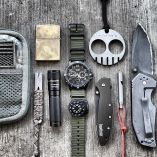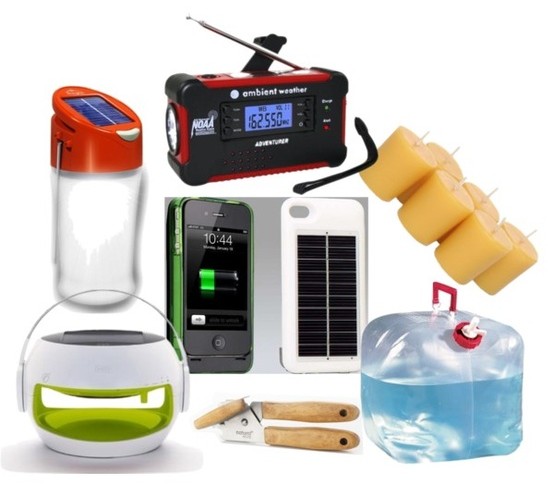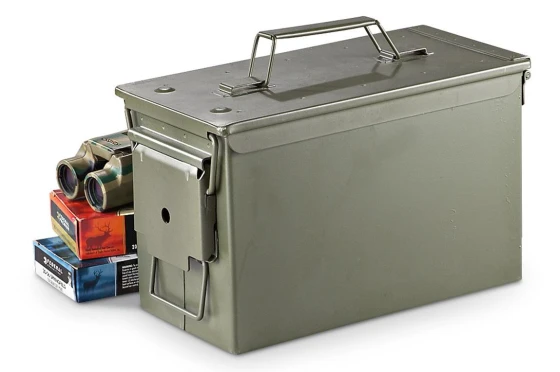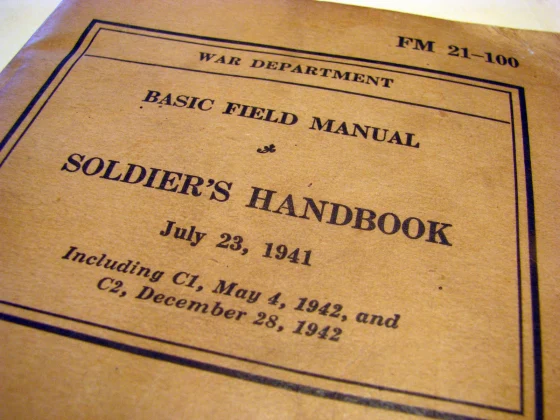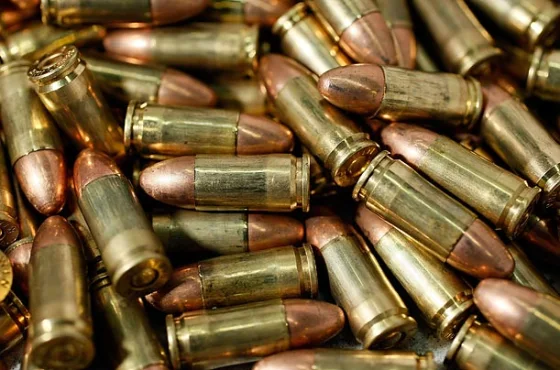Spoiler:
There are two jobs for firearms lubrication. The first is to lubricate the moving parts of a firearm so that it continues to properly function after it get hot and dirty. The second job is to protect the metal parts from rust and corrosion.
Do not use WD-40 to lubricate and protect your firearms.
Do not degrease your aluminum firearm parts with Simple Green. It is corrosive to aluminum.
Be very careful using brakes parts cleaner to degrease a firearm. It may ruin or remove some spray-on firearms finishes. It may remove the lacquer finish from firearm furniture. It may harm some types of polymer. As a rule, don’t use it on wood or plastic, and always test in an inconspicuous area to ensure product will not harm surfaces.
Gun Scrubber brand degreaser is the safest product to degrease your firearms, although the solvent may still harm some finished surfaces, plastics, laminates, composites, rubber grips or other materials used in the construction of today’s firearms. Use caution and always test in an inconspicuous area to ensure product will not harm surfaces.
If you choose to lubricate your firearms with grease, be sure to use high-temperature wheel bearing grease (intended for car and truck wheel bearings that get very hot from the brakes). It is okay to use “marine” trailer bearing grease, but it will not have the heat resistance of high-temperature wheel bearing grease. DO NOT use white Lithium grease.
The hotter your firearm gets, the slicker and better performing that high-temperature wheel bearing grease becomes. Conversely, the colder that the grease gets, the less viscus it becomes. At cold enough temperature it will actually impede firearm function and reliability until the firearms is fire a few times and warmed up. To be safe, don’t use grease in weather temperatures below 40° F. Use a synthetic motor oil instead.
Gun oils and CLP type products are great to help break down gunshot residue and clean dirty firearms. They can be used to lubricate a firearm, however during high round count, extended shooting sessions (such as a firearms class or SHTF scenario) the product will quickly blow out or cook away from the firearm’s moving parts and leave nothing to lubricate and protect. During firearms storage these products will weep away from the desired location on moving parts. During extended storage they will eventually turn into a varnish-like goo that will gum up a firearm and impede its function the next time that you try to use it. Use these products to help clean the firearm, but wipe the parts dry and lubricate the moving parts with high-temperature wheel bearing grease or synthetic motor oil.
If you choose to use Frog Lube, remember that the directions state that you can not use any other lubricant with it. This means that if you need to reapply lubrication during an extended shooting session (shooting class or SHTF scenario) you will have to make sure that it is Frog Lube.
If you don’t have the patience for a detailed explanation, then you will still be well served by the information above. If you want to know more, keep reading.
Subjects Covered:
Degreasers:
- Simple Green
- Brake parts cleaner
- Gun Scrubber brand firearms degreaser
Oils:
- WD-40
- WD-40 LTCI (Long Term Corrosion Inhibitor)
- Ballistol
- Breakfree CLP
- Hoppes Gun Oil
Lubricants:
- Motor Oil
- Grease
Treatments:
- Froglube
Product Testing:
- Lubrication Heat Test
- Long Term Corrosion Protection Test
back to top
Simple Green:
Simple Green is an environmentally safe, general purpose degreaser, however it is corrosive to aluminum. Do not use it on any firearms that have aluminum parts, such as AR-15 rifles.
back to top
Brakes Parts Cleaner:
Brakes parts cleaner is a very effective cleaner / degreaser, however it is not environmentally friendly so make sure that you have a way to capture the used product and properly dispose of it. I have degreased gun parts over my oil pan that I use when draining my vehicle’s oil during its oil changes.
Be very careful because brakes parts cleaner can strip the clear coat off of some wood firearms furniture finishes. Also, it might damage some types of firearm “painted” finishes. It should be safe for blued and Parkerized finishes.
As with any degreaser, after use the metal will not have any lubrication and corrosion protection. You will need to properly lubricate and protect the parts as soon as possible.
back to top
Gun Scrubber Firearms Cleaner:
Gun Scrubber Firearm Cleaner is a pressurized, fast evaporating firearm cleaner that cleans internal metal firearm parts and firearms effectively.
Gun Scrubber works very similar to brake parts cleaner, but it usually safer on most firearm finishes. While safe for most firearm usage, the solvent may harm finished surfaces, plastics, laminates, composites, rubber grips or other materials used in the construction of today’s firearms. As with any firearm degreaser, always test in an inconspicuous area to ensure product will not harm the parts. Also, do not allow product to pool on, in or under firearm, or components to reduce the possibility of damage.
FYI: “Gun Scrubber Firearm Cleaner” is the same as the “Gun Scrubber Synthetic Safe” formula. The product labeling did not specify “Synthetic Safe”, but it is the same formula.
As with any degreaser, after use the metal will not have any lubrication and corrosion protection. You will need to properly lubricate and protect the parts as soon as possible.
If I use Gun Scrubber to blast dirt out of a confined space, such as a trigger group, as soon as it evaporates I will spray the degreased surfaces with CLP or some other type of oil, allow it time to penetrate the spaces between all of the parts, and blow out the excess oil with an air compressor. If you don’t have an air compressor, you can use Q-Tips cotton swabs to mop out any excess oil.
back to top
WD-40:

WD-40 was created as a rust preventative solvent and degreaser for missile parts by technicians at the San Diego Rocket Chemical Company. Its name stems from the fact that it was their 40th attempt to create such a compound by “water displacement”, thus the name WD-40.
 WD-40 has a lot of great uses, however firearms protection isn’t one of them. Up to 50% of WD-40 is mineral spirits, and it contains less than 25% petroleum-based oil. You can use WD-40 as an emergency firearms lubrication, however it will quickly evaporate from scalding hot parts on modern sporting rifles (AR15, AK47, etc.) or machine guns. Also, you do not want to store your firearms for long-term using WD-40 to protect the metal. They will rust and corrode away.
WD-40 has a lot of great uses, however firearms protection isn’t one of them. Up to 50% of WD-40 is mineral spirits, and it contains less than 25% petroleum-based oil. You can use WD-40 as an emergency firearms lubrication, however it will quickly evaporate from scalding hot parts on modern sporting rifles (AR15, AK47, etc.) or machine guns. Also, you do not want to store your firearms for long-term using WD-40 to protect the metal. They will rust and corrode away.
WD-40 works great for removing Cosmoline from surplus gun parts, however after cleaning the parts you will want to wipe down all of the parts with some type of gun oil or synthetic motor oil.
back to top
WD-40 LTCI (Long Term Corrosion Inhibitor):
back to top
Ballistol:
Ballistol has been around and trusted by sportsmen for many years. I have several friends that swear by this product. Further down this page there are several videos that compare this product to other similar products in terms of high heat lubrication and corrosion protection capabilities.
Like all firearms oils, the product can blow out or cook away during extended rapid fire or automatic fire sessions. Your weapon may need its lubrication to be periodically refreshed during an extensive shooting session.
Many petroleum bases lubricants deteriorate into sticky varnish over an extended time period.  A year or two ago the shooter cleaned his gun, and afterwards its action was slick as warm butter. Two years later the residual lubricant in the chamber and on the moving parts has turned into a thin, film of goo, similar to the consistency of maple syrup. Rounds may fail to completely charge into battery, or empty casing may get stuck in the chamber to a point that the extractor can’t pull them out. Slides may drag and move sluggishly on frames and not move as freely as they should. I have on several occasions helped a shooter break down their firearm, scrub its parts with an old toothbrush and some fresh gun oil, and then run a brush and patch through the chamber and barrel until they were clean. After a good cleaning their guns always run like a scalded dog (southern slang for really fast). It’s bad enough when a gun that was cleaned two years ago acts like that. Imagine if it was put away dirty and all of the gunshot residue (GSR) impregnated oil turned to varnish. It ain’t gonna shoot.
A year or two ago the shooter cleaned his gun, and afterwards its action was slick as warm butter. Two years later the residual lubricant in the chamber and on the moving parts has turned into a thin, film of goo, similar to the consistency of maple syrup. Rounds may fail to completely charge into battery, or empty casing may get stuck in the chamber to a point that the extractor can’t pull them out. Slides may drag and move sluggishly on frames and not move as freely as they should. I have on several occasions helped a shooter break down their firearm, scrub its parts with an old toothbrush and some fresh gun oil, and then run a brush and patch through the chamber and barrel until they were clean. After a good cleaning their guns always run like a scalded dog (southern slang for really fast). It’s bad enough when a gun that was cleaned two years ago acts like that. Imagine if it was put away dirty and all of the gunshot residue (GSR) impregnated oil turned to varnish. It ain’t gonna shoot.
So what does this mean to you? If you have firearms that you intend for self-defense purposes (carry on your person, or staged at home) you should keep them cleaned and lubricated on a regular basis. Just because it was cleaned a long time ago and then put into storage does not mean that it is still a dependable self-defense tool. Twice a year I fully disassembly any firearms that I might stake my life on and give them thorough cleaning and detailing. Is this overkill? Maybe, but I’ve seen “clean guns” fail too many times, but every time that I shoot my recently maintained firearms they always go bang.
back to top
Break Free CLP (Cleaner / Lubricant / Preservative):
I have had many years of success with Break Free CLP. It works great to help break down gunshot residue and fouling when cleaning firearms, and does a great job of lubricating moving parts.
As discussed with Ballistol, firearm oils can blow out or cook away during extended rapid fire or automatic fire sessions. Your weapon may need its lubrication to be periodically refreshed during an extensive shooting session. Many petroleum bases lubricants deteriorate into sticky varnish over an extended time period. If you have firearms that you intend for self-defense purposes (carry on your person, or staged at home) you should keep them cleaned and lubricated on a regular basis. Just because it was cleaned a long time ago and then put into storage does not mean that it is still a dependable self-defense tool. Twice a year you should fully disassemble any firearms that you might stake your life on and give them thorough cleaning and detailing.
back to top
Hoppes Gun Oil:
Hoppes also has been making tier one gun cleaning products for many, many years.
 As discussed with Ballistol, firearm oils can blow out or cook away during extended rapid fire or automatic fire sessions. Your weapon may need its lubrication to be periodically refreshed during an extensive shooting session. Many petroleum bases lubricants deteriorate into sticky varnish over an extended time period. If you have firearms that you intend for self-defense purposes (carry on your person, or staged at home) you should keep them cleaned and lubricated on a regular basis. Just because it was cleaned a long time ago and then put into storage does not mean that it is still a dependable self-defense tool. Twice a year you should fully disassemble any firearms that you might stake your life on and give them thorough cleaning and detailing.
As discussed with Ballistol, firearm oils can blow out or cook away during extended rapid fire or automatic fire sessions. Your weapon may need its lubrication to be periodically refreshed during an extensive shooting session. Many petroleum bases lubricants deteriorate into sticky varnish over an extended time period. If you have firearms that you intend for self-defense purposes (carry on your person, or staged at home) you should keep them cleaned and lubricated on a regular basis. Just because it was cleaned a long time ago and then put into storage does not mean that it is still a dependable self-defense tool. Twice a year you should fully disassemble any firearms that you might stake your life on and give them thorough cleaning and detailing.
back to top
FrogLube:
FrogLube is an interesting product in that is either sworn by, or sworn at by those that have tried it. The basic premise of FrogLube use is that while after use the product appears dry, it is still attached to the metal on a molecular level and is lubricating and protecting the parts. Before application the firearms must be thoroughly degreased so that the FrogLube will not be contaminated by any lubricants that were applied in the past. When the FrogLube treated firearm has been fired a lot and you feel a need for fresh lubricant (such as at a high round count firearms course, or in a hostile SHTF scenario), you are not supposed to use any other lubricant or oil other than FrogLube. For this simple reason I not a big supporter of depending on FrogLube when planning for long-term SHTF scenarios. I want to be able to use what ever lubrication that I might stumble upon (gun oil, motor oil, wheel bearing grease, etc.).
back to top
Motor Oil:
Motor Oil Philosophy:
There is no amount of shooting, including with a machine gun, that will be more mechanically abusive to the lubrication inside of a firearm than what is experienced inside of an internal combustion engine when driven for thousands of miles at a time. If motor oil can survive that torture, then there isn’t any way that it will experience thermal breakdown inside of a hot gun, including a machine gun.
A quart of synthetic 10W-40 motor oil is much less expensive than the equivalent amount of “gun oil”, and will last even the most dedicated shooter a very long time.
Like any oil, over time it may weep out of the firearm and leave certain gun parts less lubricated than when you first applied it. Also, when shooting a high round count (such as a firearms training class or extended SHTF shootout) the lubrication my blow out of the gun as it is continually fired. Because it is heavier than conventional “gun oils”, it should stick to the gun parts longer before weeping or blowing out.
Make sure that your thoroughly test your firearm with motor oil as lubricant before trusting your life to it.
back to top
Grease:
High-Temperature Wheel Bearing Grease:
I used high-temperature wheel bearing grease to lubricate a S&W M&P-15 carbine and ran 1300 rounds through it during a 2-day defensive carbine course without a single malfunction. In the same course I used grease to lubricate my 9mm Glock-17. I ran 900 rounds through the pistol without a single malfunction. At the end of the course, the internals of both firearms were very dirty as expected, but were just as slick and lubricated as before the class started. Gun oil would have blown out or cooked away, and fresh lubrication would have probably been necessary somewhere during the course. The grease worked like a charm. Wheel bearing grease is inexpensive too.
Semi-automatic rimfire firearms (such as the Ruger 10/22) get dirty quickly because .22LR ammunition produces a lot of gunshot residue. Mixed with gun oil inside of the firearm, the resulting goo can quickly cause the firearm to have reliability problems. I have had great success by thoroughly cleaning my Ruger 10/22 rifles with Breakfree or some other type of gun oil, however when the parts are clean I wipe all of the internal parts bone dry. The metal is still protected from corrosion, but now there isn’t any residual oil to mix with the burnt powder residue and gum up the function the gun. I then apply a very thin-film on anywhere that the bolt rubs the inside of the receiver. When the firearm is reassembled the grease makes the bolt travel back and forth as smooth as butter. The hotter the little gun gets, the smoother it runs. Using Federal bulk pack ammunition, Ruger’s BX-25 magazines, and a Ruger 10/22 lubricated as just described, I was able to fire an entire 550 round “brick” of ammunition without a single malfunction. Cleaning the firearm was fairly easy too. I wipe out the old grease, applied a fresh application, reassembled the rifle, and continued shooting.
The hotter your firearm gets, the slicker and better performing that high-temperature wheel bearing grease becomes. Conversely, the colder that the grease gets, the less viscus it becomes. At cold enough temperature it will actually impede firearm function and reliability until the firearms is fire a few times and warmed up. To be safe, don’t use grease in weather temperatures below 40° F. Use a synthetic motor oil instead.
back to top
White Lithium Grease:
Do not use high-temperature Lithium grease in your firearms. Although it is labeled as “high-temperature”, it does not maintain proper lubrication properties at extreme temperatures that might be experienced in a serious shooting class or extreme prepper / survival situation. Also, White Lithium grease does not have the water-repellent properties as high-temperature wheel bearing or marine grease.
back to top
Lubrication Heat Test:
Some of these products survive extreme heat better than others.
back to top
Long Term Corrosion Protection Test:
Some of these products protect against corrosion better than others.
back to top
Alternative Products Long Term Corrosion Protection Test:
back to top
Cold Weather Testing:
Some of these products can handle extreme cold better than others.




































